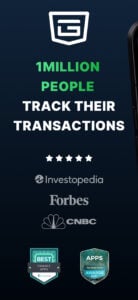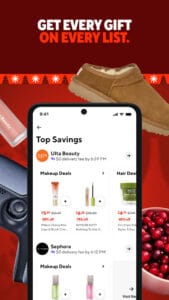Want to hire Mobile App developer? Then you should know!
Why Hire a Mobile App Developer?
Hire a mobile app developer, and your project doesn’t crash ‘cause someone knows their shit. These guys push apps to the App Store or Google Play without screwing up the tech or design—everything’s set for a smooth launch. They get usability, speed, and features dialed in, so users don’t spit and your business looks good. Want an app people keep instead of trashing? This is your move.
Seasoned devs can code for iOS, Android, or hybrid—startups get prototypes or MVPs to turn napkin ideas into real stuff, while big dogs team up for real-time chat or IoT hooks to juice their products. A sharp team keeps the app from lagging—testing, debugging, and smoothing it out. Need a clean interface, beefy backend, or API that doesn’t choke? They’ll crawl inside your head and make it happen.
How it works
- Figure out what you need
Gather all the tasks and business requirements in one file. - Write a job post or project brief
Our journey starts with a 30-min discovery call to explore your project challenges, and technical needs: Android, Swift, UI/UX design, - Check the candidates
Within 1-3 days, we’ll share profiles and connect you with the right talents to schedule a call with developers in person. - Set the rules and onboard
Discuss and define convenient collaboration framework, budget, timeline, terms and proceed with onboarding.
Your job post’s gotta punch—short, clear, so real devs bite. Use a title like “iOS Guy for Med App” or “Cross-Platform Dev for Chat”—boom, they get it. Spill the project—speed, UX, backend—and demand skills: Flutter, Xamarin, JavaScript, API, design. Say what you expect—finished app for the store, tested MVP, or endless QA. Toss in your turf—shop, healthcare, startup—so they know the deal.
What Mobile App Developers Do
iOS Development
They bang out apps for iPhone and iPad, running smooth on Apple’s system and sliding into the App Store no sweat.
Android Development
They crank apps for Android—cheap phones to tablets—making sure Google Play doesn’t gag and users download.
Cross-Platform Development
They hit iOS and Android at once with React Nativeor Flutter—saves time, but they gotta not screw it up.
UI/UX Design
They sketch interfaces that don’t piss people off and designs that don’t burn eyes—users stick when it’s easy and sharp.
Backend
They dig into the server side—keeping the app upright, APIs humming, and data flying without jams.
Quick Facts about Mobile Development:
- The Original Pocket Sorcery (1993)
In the dark recesses of ’93, IBM launched the world’s first “smartphone,” the Simon Personal Communicator, onto the tech stage. This hefty brick of progress arrived with a calendar, a calculator, and a giant address book: the holy trinity of pre-millennium magic. Apps didn’t get downloaded then; they were soldered into the phone like runes. Did you want Angry Birds? Alas, you are stuck with black-and-white numbers, baby. - App Store Gold Rush (2008)
And the day Apple launched the App Store, all developers worth their mountain dew and caffeine patches stepped into this digital sandbox. In 30 days, $10 million poured down on geeks coding in dark basements. In 2023, Apple boasted that it slid $1 trillion into the pockets of developers. That’s a trillion—and a T. Meanwhile, your flashlight app began charging $2.99/month. - SMS: The Prehistoric App
Before apps raised their code-filled booties on stage, SMS was the first low-res mobile hero. In 1992, some bored engineer wrote “Merry Christmas” on a Nokia phone the size of a car battery. And thus, texting was born. The minimalist splendor of 160 characters created the language in which we now shout, “Where are you?” - The 8 Month Bird That Dragged the Internet Down.
Suppose it’s 2009, and someone at Rovio in Finland thinks “We can shoot birds into walls. For fun.” Then there’s Angry Birds, a slingshot simulator that took 8 months to create and $1 billion to make. Who would have thought that stomping pigs would lead to films, toys, and a Vatican-sized marketing company? - Shazam’s Magic Ears (2002)
When Shazam was first released, people dismissed it as witchcraft. Look at a speaker on your phone, and it’ll tell you what Beyoncé song it’s playing? WHAT. IS. THIS. Dark sorcery? No, just primitive AI pulling its muscle in the form of arcane algorithms. The app opened the doors to our voice recognition software—and to your phone listening to you 24 hours a day. - WeChat App (2011)
Forget downloading 20 apps — China “We’ll just make it all into one!” Enter WeChat, the super app. Do you want to take a taxi, transfer funds, or call your mother? WeChat’s got you. With 1 billion daily downloads, it’s not just an app — it’s a virtual state. If you delete it, they say, a drone comes out and gently begs you to put it back. - Tetris on a Brick (1994)
Before Candy Crush had eaten your brain, Tetris was the first mobile game on the Hagenuk MT-2000 phone. A Tetris phone in 1994 — long before the iPhone rolled out. It’s like discovering someone built a functional jetpack in the 1950s and promptly forgot about it. - NASA’s PalmPilot Hack (1998)
NASA, in their cosmic wisdom, strapped a PalmPilot onto an early Mars rover. Why? Because even rocket scientists have to get out of line. That Frankenstein experiment demonstrated how a modest mobile phone could program robots to inhabit extraterrestrial planets, paving the way for our modern app-driven drones. Your smartphone? NASA stuff for cat videos. - Symbian (1997)
Once upon a time, long before Android and iOS were sucking market share like frat boys on spring break, there was Symbian OS. From 1997 to its silent end, Symbian governed the mobile kingdom. It was gimcrack, sparse, and lovely: a tragic hero lost in the ether of development. Splurge one on this lost outlaw. - Pokémon GO’s Augmented Chaos (2016)
In 2016, an odious app came out! Pokémon GO transformed the globe into an amusement park of dystopian proportions in which millions crashed into traffic and chased Pikachus. The game raised $207 million within a month, you gamify life and people will just jump off cliffs. Cities rebuilt sidewalks to accommodate crowds of AR-dependent trainers. It was a lovely, disorganized summer.
- BONUS: Instagram’s Insane Launch (2010)
It took 8 weeks to develop the initial prototype for Instagram, which two months later had 1 million users. They were obsessed with turning their lunch into antique paintings. Now? It’s a multi-billion dollar company run by stars who are paid to lick puppies on camera. - Final Words of Madness
We’ve gone from ancient messaging to super apps that can take over nations. It’s quick, risqué, and totally out of control – and we’re on board. What’s next? Apps that predict your thoughts? Phones that cook dinner? Whatever it is, history has taught us this: we’ll download it, pay for it, and swipe right.
What are the top Mobile instruments and tools?
- Android Studio: Official IDE for Android app development
- Xcode: Apple’s IDE for iOS app development
- Appium: Automation tool for mobile apps
- Charles Proxy: Web debugging proxy tool
- Postman: API development tool
- TestFlight: Beta testing tool by Apple
Hire a Mobile App Developer on Upstaff
Find top mobile app developers on Upstaff to crank out apps that match your business hustle. Need iOS, Android, or something that runs both? These pros sling UI/UX design, API tie-ins, and the whole app development grind. With chops in languages, frameworks like Flutter and React Native, and know-how for App Store and Google Play, they build for e-commerce, healthcare—whatever you’re chasing. Post your gig now and grab talent that turns your app idea into a real damn thing, done right.
Talk to Our Expert













